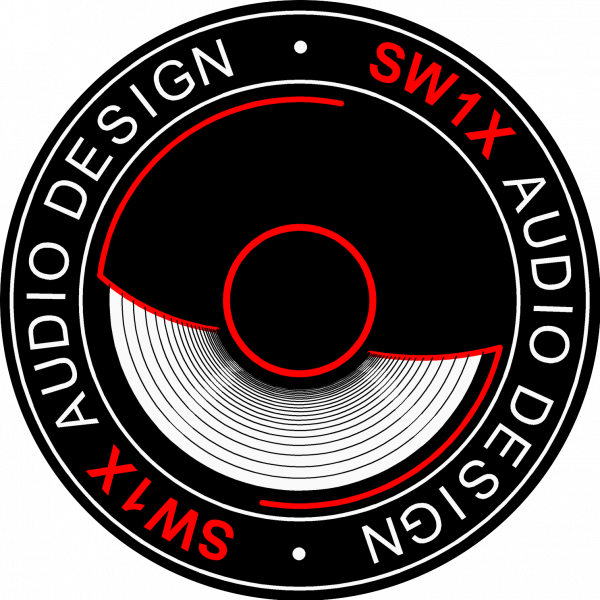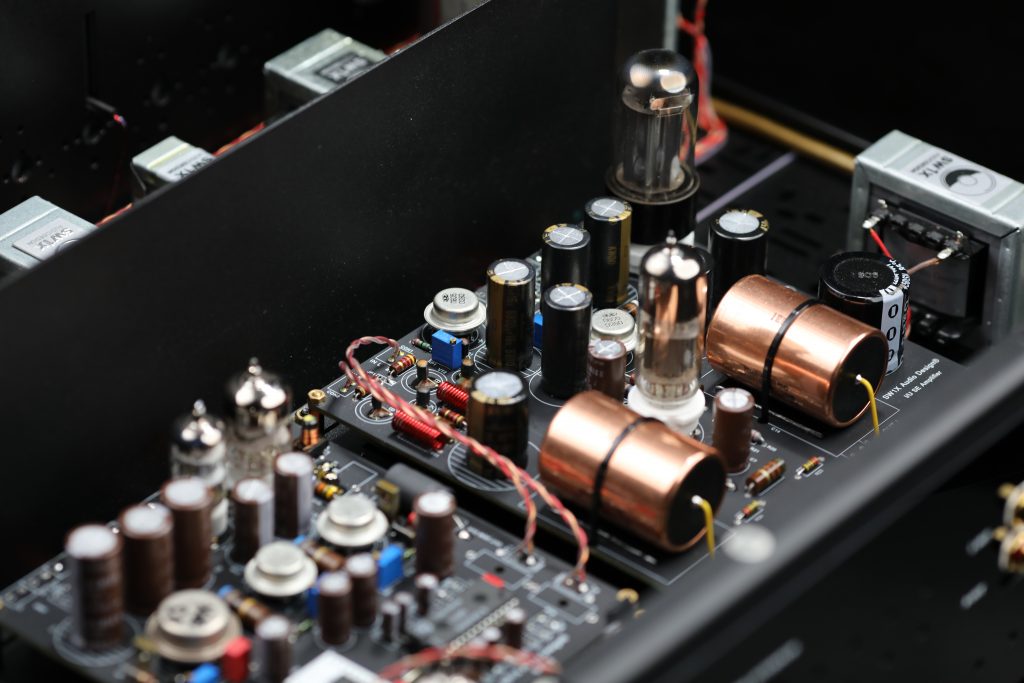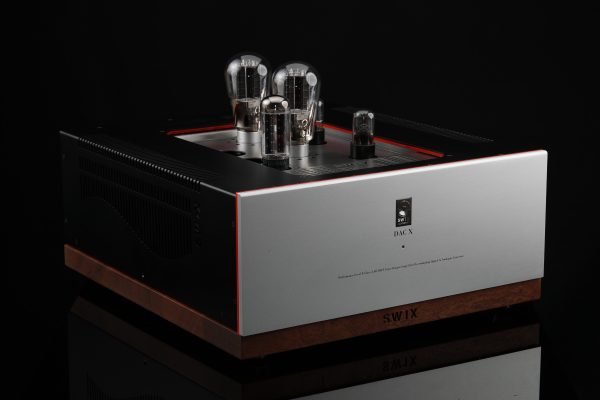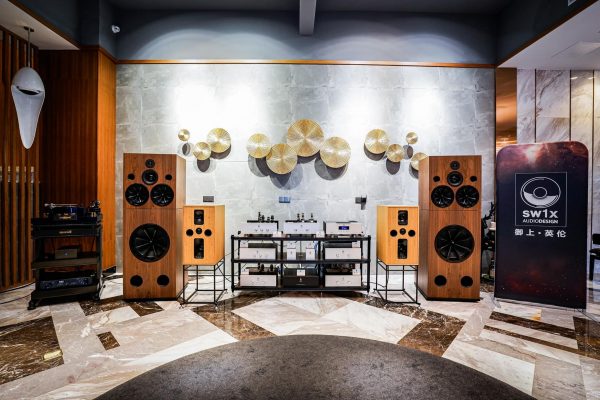Frequently Asked Questions (FAQ)
Q: What is I/V conversion and what does it do?
A: The I/V (or more correctly I/U) conversion stage is a process of converting signal currents into voltage signal and is located in between the DAC current output and the first gain (amplification) stage. I/U- current to voltage conversion stage is a critical element to the overall sound of a DAC and is an important as the choice of the DAC itself. An analogy is if DAC was an engine then I/U conversion stage would act like a transmission (gearbox) of a car. All R2R (aka resistor to resistor ladder) type of DACs, convert digital data into continues analogue signal in a form of currents. So the output of those DACs is a weak current, which is high impedance in nature. However, we need a signal of substantial magnitude, in form of voltage. That means that a conversion of current to voltage is necessary to get a signal into voltage form. In most cases the resulting signal in a form of voltage is still not large enough and needs to be amplified by a by a voltage amplifier such as a valve or transistor in order to drive the subsequent gain stage (amplifier). The conversion itself can be performed either passively (via a shunt resistor) or actively (via a transistor). Anybody who tells you that resistors or transistors are not necessary at the current output of a R2R DAC either have no idea what they are talking about or are actually are trying to fool you.
Q: Tube fans prefer valves over transistors. You are using valves in the output stage but why do you use transistors (active) in the I/U conversion instead of commonly used resistors (passive I/U)?
A: There is a lot of myth and misunderstanding around I/U conversion as many people do not really understand the importance and the differences in their implementation. Our R2R DACs in combination with active I/U (discrete design in SW1X’s way) pretty much resemble the sound of modern R2R discrete DACs but with a hint of soft & full bodied flavor of vintage sound. We do also offer either I/U conversion technique with our DAC I (currently at SW1X performance level 1 only) while giving the preference to the active I/U (performance level 2 & 3 are active I/U). There are a number of reasons for that:
- Active I/U is a more accurate way of converting currents into voltage. When it is engineered correctly, it offers higher resolution and greater dynamics over the passive I/U conversion. In this way it rivals any modern DAC chip, which is based on voltage output and relies on complex transistor circuit found inside op-amps (please read the point 3.) integrated in the modern Delta Sigma type of DAC chip (yes, that applies to almost all DSD format capable DACs).
- All DACs, including the finest R2R DACs such as TDA1541 have transistors inside them. How else would it be possible to control all the logical conversion processes of converting digitally encoded data stream into purely analogue data? Transistors just as valves are acting as gate switches, which control current flow by either letting it trough or preventing it. Since there is a considerable number of those transistor inside those DACs, how could a pair of additional, specially selected transistors of highest quality do any harm? They do not really amplify voltage per se but perform a crucial conversion task by matching the impedance across the output of a DAC and the valve grid, which is detrimental for optimal signal transfer behavior and to the quality of sound. A resistor simply cannot match impedance because it is passive component. All it does is resisting flow of current to a certain degree, which in the end removes quintessential dynamics irreversibly.
- Not all active I/U stages are created equally. Unlike the vast majority of products on the market, we employ our custom designed discrete I/U converter based on a single specially selected transistor powered by our custom discrete power supply. On contrary, active I/U conversion inside of majority of products is performed with an integrated circuit (IC) chips also called op-amps. If already not integrated inside a DAC chip, as it is the case with almost all Delta Sigma DACs, those are small usually 8-legged chips but very complex devices with as many as 30-40 low quality Silicon transistors and resistors are used to amplify the DAC output voltage. Since all of them are inheritably non-linear voltage amplifiers they need to operate in closed feedback loop design requiring a lot of negative feedback applied (which corrects for non- linearity but also removes musicality). So if one is using a Delta Sigma DAC voltage ouput then one is also using built in op-amps. How else would be possible to obtain an approx. 2Volts RMS output coming out from the DAC chip?
- Last but not least we offer both I/U conversion DAC versions, which can be directly compared using otherwise identical circuit design. In the end the customer can decide for himself/herself which sound suits him/her better.
Q: Almost every high end DAC I know is using passive I/V conversion. Why bother with active I/V conversion if one could get away with a passive (shunt resistor) I/V?
A: Of course, one can get away with a resistor instead of a transistor. The resulting sound is OK however it is sub optimal from the sonic and technical perspective as there is an impedance mismatch in between active amplification stage, particularly if I/U conversion is followed by a valve (less problematic is the transistorized gain stage but has its other problems). Valves are high input impedance devices by its nature and R2R DAC output comes in form of tiny and weak currents (high output impedance by nature, which ideally would like to see a low impedance input of the subsequent amplification stage. Therefore high output impedance of R2R DAC and high input impedance of a valve results in impedance mismatch. More about it can be read here.
Q: Passive I/V is simpler to implement, sounds good and is a relatively precise way to convert currents to voltage. Why did you opt for active I/U conversion?
A: Passive I/ U conversion technique based on shunt resistors may appear less erroneous because there are not active components involved but it is by far less accurate because of the impedance mismatch. The quality of those shunt resistors is crucial to the sound. Choose a wrong resistor and the sound is anemic or distorting. The same also applies to the type and material of those resistors but overall it is way more forgiving than the active I/U conversion approach as implemented by us.
Active I/U conversion is more difficult to implement correctly but implemented optimally it can be very rewarding. One gains more clarity, gets higher resolution and greater dynamics, provided that the implementation active I/U is optimised. However, since there are active components involved there is way more room for errors with active I/U than with passive. Active I/U is way less forgiving but it is more accurate conversion approach because the active I/U is partly independent on the low output impedance of those tiny DAC output currents. It has more potential to errors because of the active components, which underlie the voltage fluctuations (aka noise) of the power supply- therefore the quietness and low output impedance of the power supply is crucial. Out of this consideration in all of our low voltage power supplies we employ our custom designed, discrete and shunt voltage regulated type based on a powerful Germanium transistor. Of course the material and components quality is detrimental as with the choice of a resistor in the passive I/U. The power supply and the choice of a transistor is therefore critical element to an accurate I/U conversion – it either makes or breaks the sound. In this respect it very similar to the field coil type of speakers.
Q: What is the difference in sound between Germanium and Silicon transistors you use in the I/U stage?
A: Germanium has a even softer, warmer & tubey sounding character than the Silicon based transistor we have been using so far. The perceived clarity and the ability to pass low level of musical information of Germanium is also of a magnitude higher of the Silicon alternative partly because Germanium has a much lower breakdown voltage than Silicon. Both transistor types are excellent sounding but do have a different character. If those transistor were humans, Silicon transistor would be a macho type of man and Germanium would be a gentle & warm but an expressive character type of woman.
Q: So an active I/U conversion utilizing a transistor is the best solution in terms of price/quality ratio but a more costly properly designed passive I/U conversion stage using a high quality I/U interface transformer provides a cleaner sound than what could be achieved in any active I/U conversion. Is my understanding correct?
That is not entirely correct. We are talking about highest possible quality I/U silver wound interface transformers costing a couple of thousands of USD followed by a pair of exotic tantalum resistors that could rival our approach. One could use interface transformers at lower cost as low as a couple of hundred USD but most of them are quite coarse and grainy sounding i.e. not pass the low level musical information. That is one of the reasons as why some people go back to the simplistic shunt resistor approach. Either solution (low cost I/U interface transformers or resistors) sounds generally worse than our specially selected transistors (from the 60s , 70s or 80s) and in the same time the I/U interface transformer does not sound more dynamic than our solution.




